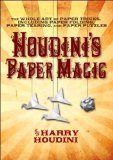From the simple
all the way
to the extremely complex...
all students are about to embark on a study of this magnificent art!
For the next 4 weeks, all students will be exploring the art of paper folding, learning how to read origami diagrams, creating their own folded masterpieces and connecting the process to math and social studies skills and content. They will be using ALL of their smarts during the study and I encourage you to explore Origami in your own home
!
Here is a short overview of the unit:
Inquiry Activities:
Accurately and precisely create an origami figure. How many geometric shapes can you create?
Content Understandings: Geometry, Two and Three Dimensional Shapes
Standard Connections to Math:
PK.G.1. Describe, name, and interpret distance and position in space; understand and use positional words.
PK.G.2. Recognize, name, and describe simple two- and three-dimensional shapes.
K.G.1. Name shapes of pattern blocks (e.g., triangle, square, circle).
K.G.2. Describe attributes of two-dimensional shapes (e.g., number of sides, number of corners, size, roundness); sort these shapes.
1.G.1. Describe attributes and parts of two- and three-dimensional shapes (e.g., length of sides and number ofcorners, edges, faces, and sides).
1.G.3. Identify symmetry in two-dimensional shapes.
2.G.2. Classify familiar two- and three-dimensional shapes by common attributes such as shape of curved and straight lines, number and shape of faces, edges, and vertices.
2.G.3. Match and construct congruent and symmetric shapes.
3.G.1. Compare and analyze attributes and other features (e.g., number and shape of sides, faces, corners, rightangles) of two-dimensional geometric shapes, especially the attributes of triangles (isosceles, equilateral, right) and quadrilaterals (rectangle, square).
3.G.3. Identify angles as right, acute (less than a right angle), or obtuse (greater than a right angle).
4.G.1. Compare and analyze attributes and other features (e.g., number of sides, faces, corners, right angles, diagonals,and symmetry) of two- and three-dimensional geometric shapes.
5.G.4. Identify and describe types of symmetry, including line and rotational.
What is Origami?
Origami, the Japanese name for the art of paper folding, compes from the Japanese verb oru (to fold) and the noun kami ( paper). A finished origami figure is called a model and instructions for a model are called a diagram.. The art is over 1000 years old and while it originally was used in traditional Japanese ceremonies, overtime it became a family pasttime passed down from one generation to the next.
Did you know?
An origami artist is usally called a paper folder. Leonardo da Vinci , renaissance painter, also studied the art when exploring the velocity of paper! Friedrich Frobel, the educator who founded the kindergarten system, used origami to introduce geometric shapes to children. Lewis Carroll, a mathematician and author of Alice in Wonderlan entertained children of royalty with origami. Harry Houdini, most famous for his work as an illussionist, wrote one of the very first English origami books in 1922!
Ready to try some with your family?
Don't hesitate to explore this art at home. Check out the links under "Think Tank at Home" and have a great time exploring! All you need is a piece of SQUARE paper. Only have rectangular paper such as magazine pages, construction or printing paper? NO PROBLEM! Simply fold and cut your rectangluar piece of paper.
( Of course, in an effort to be truly inquiry based, have your child figure out how to get a square from a rectangle!)
Finally, check-out origami books from the library, visit the sites listed on this page, pick up a packet of diagrams from the "TAKE HOME" folder on the Think Tank Bulliten Board or just make your own. Please send pictures of your beatiful work to me so I can display it here.
In the meantime, stay tuned to this blog for pictures of your children's accurate and precise work!
Until next time...
Mrs. Ford


















































